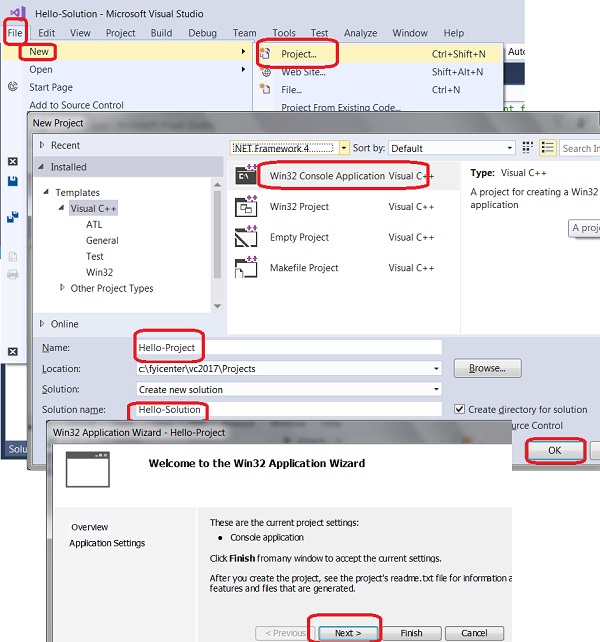

Proceed to the menu bar and click on BUILD → Build Solution.
In Additional options, you checked Empty Project. In Application type, Win32 Application was not checked. On the second page of Win32 application wizard. Once code generation from Win32 template samples is done, your main IDE view in Visual Studio should look to this. However, for the purpose of this project, we will leave options as they are.Ĭlick on Finish to both complete and close project configuration wizard. Addition options such as Empty Project, or Security Development LifeCycle can be tweaked. On the second page of the Win32 application wizard, you will be asked to select a particular type of application.īy default, when you choose to create a Win32 project, the selected option will be Win32 Application. I will not explain or describe too much in depth, as these will be covered later in sections for advanced programming. The Win32 application wizard will open to help you configure and setup project settings.īy default, Win32 appplication wizard comes with a template which takes care of creating a single document interface application so that it allows for you to begin implenting features instead of spending 10 minutes configuring and setting resources such as menus, strings, dialogs. Once the proper changes are done, click OK to start up the application wizard. In the Solution name field, rename Win32Project1 to win32-tutorials. In the Name field, rename Win32Project1 to introduction. As clarity plays an important role in software development, it would be beneficial to separate names of both project and workspace. To create a Win32 C++ application, in the window, select to Visual C++ → Win32 → Win32 Projectīy default, Visual Studio will name your workspace the same as your project. You will be asked to select what type of project to create, in this tutorial, we will use by default Win32 Project. 
To create a project, click on New Project. It is important to keep an eye on this panel while building, as several useful information such as warning, function deprecation or compile errors will show up in this area. When a project is compiling, this window is mainly used to observe build progression. Used to display the properties of a particular selected item in either solution explorer such as a file or a control in the design window. Readers should refer to this panel for any operation related to workspace or project management. This control is a set of tools, mostly consisting of shortcuts, instead of using the menu bar. Menubar is a navigation utility to be used for interacting with Visual Studio.

This is the most important and fundamental of all projects related creation procedure. Note: If you are logged in as a local user/guest or if you do not have a Microsoft account, you will be prompted to create one. You should see the start page empty, as no projects have been created. In this case, readers should refer to external C++ references for memory refresh and practice before taking onto further tutorials. However, it is important to note that a strong, preferably advanced, understanding of the C/C++ programming language is required for future tutorials. This tutorial is preliminarily intended for people with limited experience in Visual Studio. Readers will have the chance to familiarize themselves with fundamental user interfaces, panels, and controls, as these are important tools for future tutorials. This tutorial will cover the process of creating, building, and launching a minimalist Win32 API application. Resources.cpp // Header required to help detect window version # include // Macro used to reduce namespace pollution # ifndef WIN32_LEAN_AND_MEAN # define WIN32_LEAN_AND_MEAN # endif // Reference for various Win32 API functions and // structure declarations.The purpose of this tutorial is to introduce readers to the use of Visual Studio at its simplest form. Once the Win32 application wizard has finished creating the solution, add the following code to the project. Open up Visual Studio and create a new Win32 Project.
Learn and use Visual Studio's resource editor to create resources.Īssumptions are made that readers are comfortable with creating, compiling, building, launching projects, along with adding items such as files, new projects to solutions. This tutorial requires basic knowledge of Visual Studio, proficiency in C/C++, as this tutorial does not cover the C++ programming language. Part 3: Creating a Window from Scratch Intended audience By the end of this tutorial, readers should be able to load resources from a predefined file and apply it to a window. The purpose of this tutorial is to demonstrate the basics of resource creation and utilization.







 0 kommentar(er)
0 kommentar(er)
